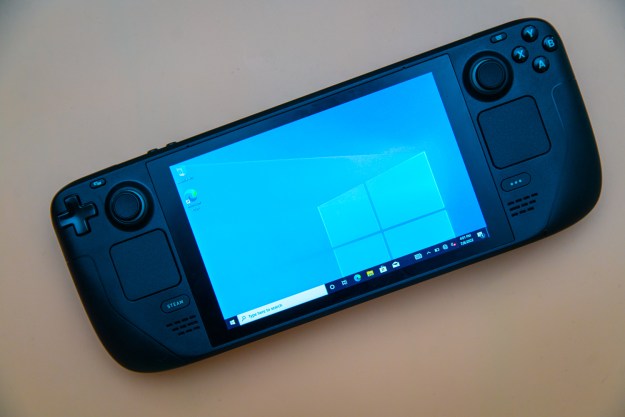The Steam Deck is Valve’s hotly-anticipated Switch-like handheld, and we finally have a look at the console’s internal hardware. As originally reported by videocardz.com, Valve has released an official teardown video showing the components and how to replace some of the more prominent parts.
Well, it’s not a teardown video in the traditional sense. The video mainly shows users how to replace the thumbsticks and the SSD, but it gives a great look at the components overall. The video also claims that it is showing why users shouldn’t do this on their own.
Per the video:
“…It’s why you really shouldn’t do this video. That’s because, even though it’s your PC…the Steam Deck is a very tightly designed system.”
So take that as you will. The video takes some time explaining why you really, really shouldn’t do take the console apart on your own, but at roughly the two-minute mark, we finally get a look at the inside.

To the right is the battery, and to the left is an outer shield that covers the SSD and the AMD Van Gogh APU. In the center is a fan, but the rest of the cooling system (including the heat sink) is below the outer shield. You’ll notice that all of this is very tightly packed together.
The narrator reminds viewers that an off-the-shelf SSD could affect power consumption and other components. Once the outer shield is removed, we get a look at what is probably the APU underneath it (though the narrator doesn’t mention it).
The APU (AMD’s name for a CPU/GPU combo) is the big selling point of the Steam Deck. It’s like integrated graphics on steroids. The chips found in the Xbox One X and PS5 are built on the same architecture. The Steam Deck obviously won’t be able to deliver that kind of performance. There just isn’t enough space for all the cores. However, early tests have shown that makes it for a pleasant gaming experience on the Steam Deck’s 720p display.
While the Steam Deck won’t win any awards for repairability, it’s definitely cool to take a look at what’s running under the hood. The first Steam Decks will be shipping out this December to early backers.
Editors' Recommendations
- Is this Razer’s Steam Deck killer?
- The Steam Deck OLED needs burn-in protection
- Proton and Nier: Automata — the untold story behind what makes the Steam Deck tick
- Nvidia is missing a golden opportunity in PC gaming
- You just can’t kill the Steam Deck





